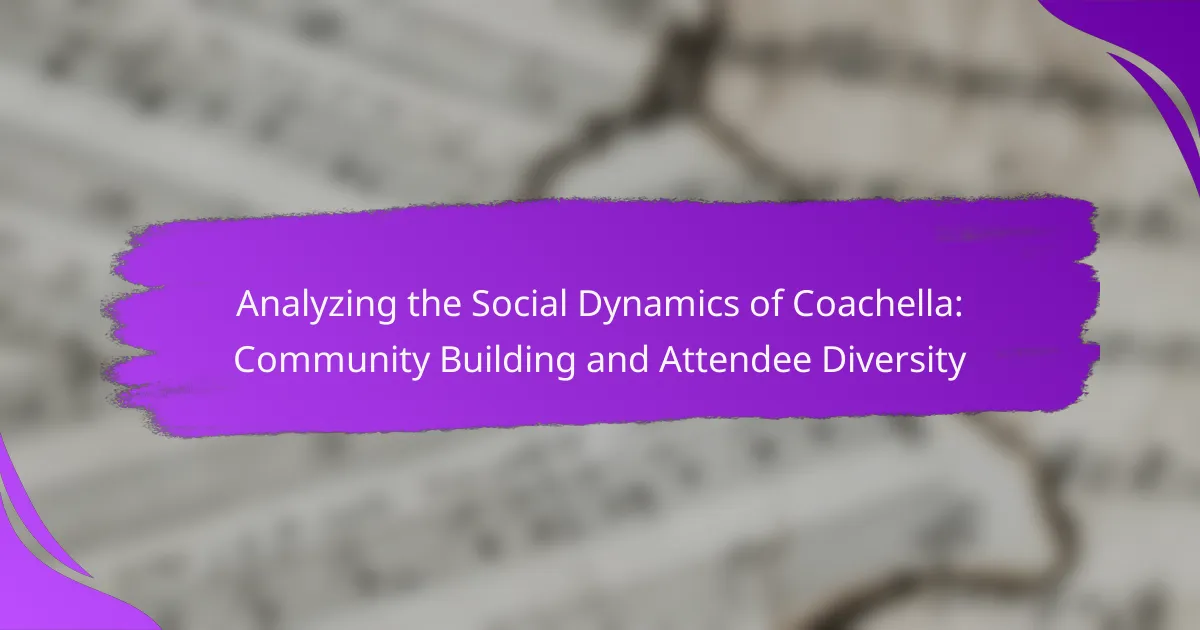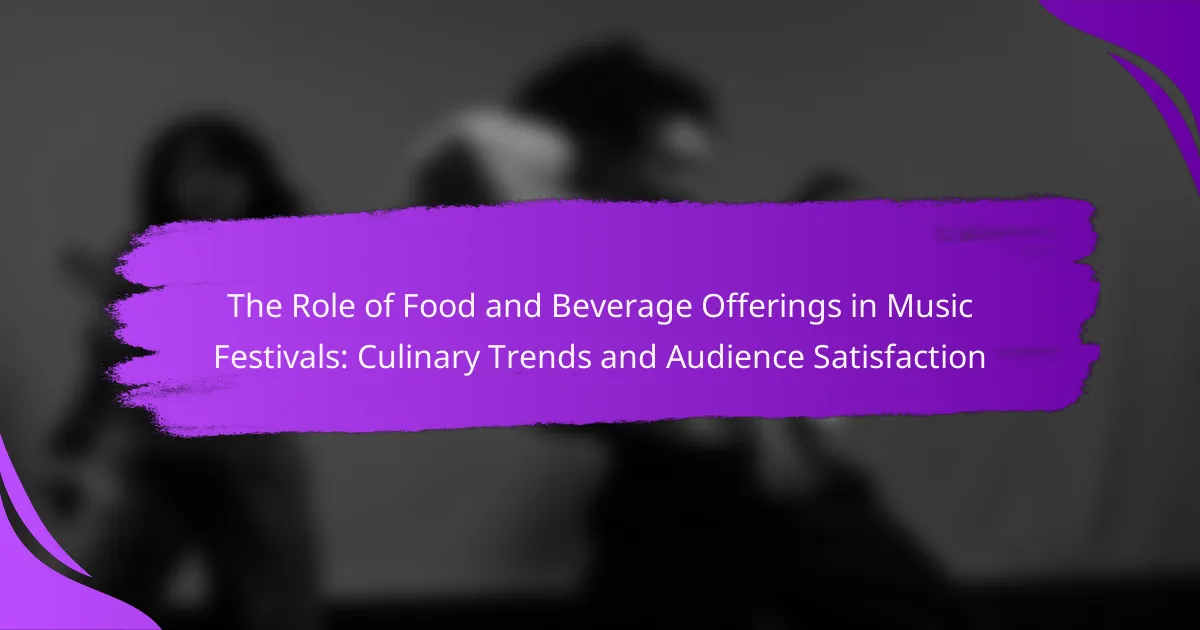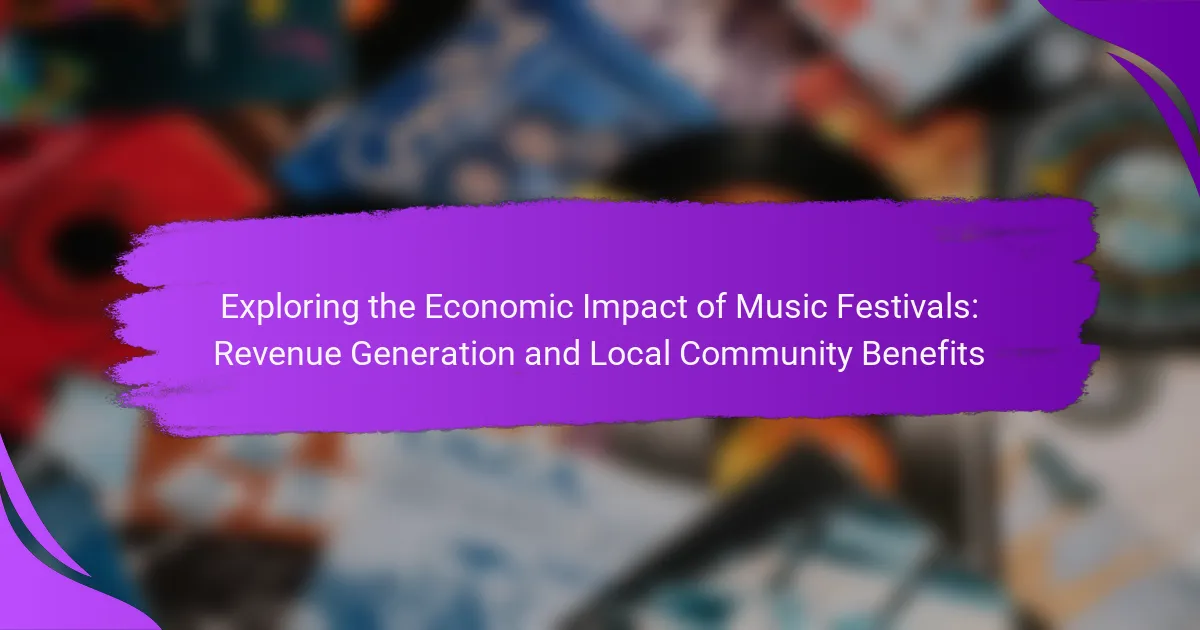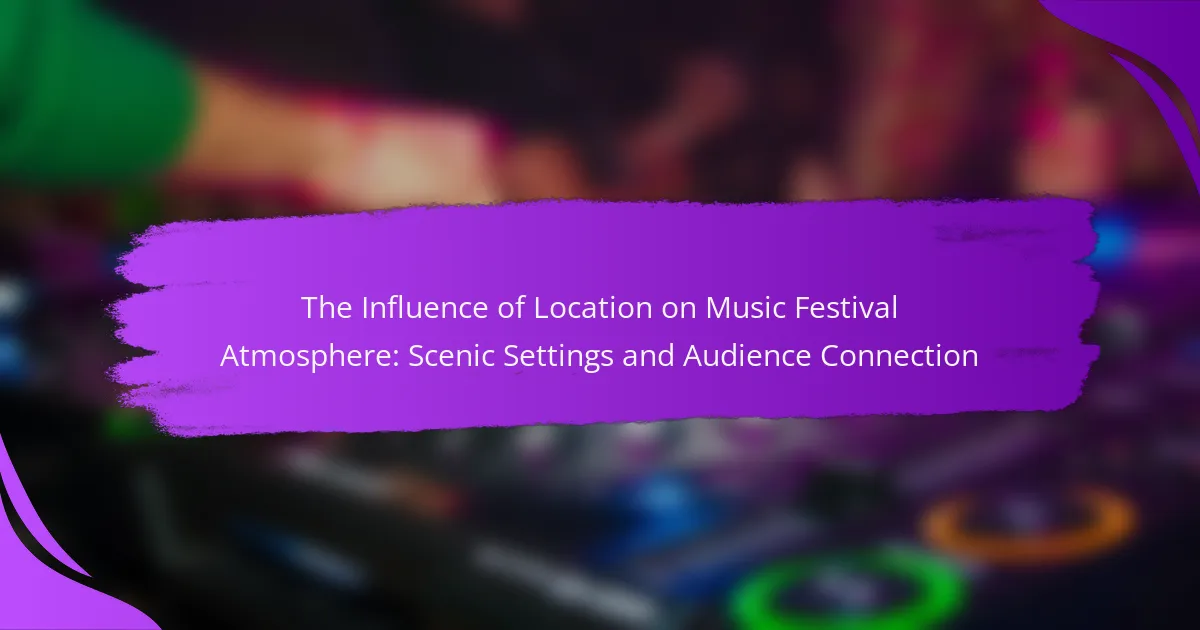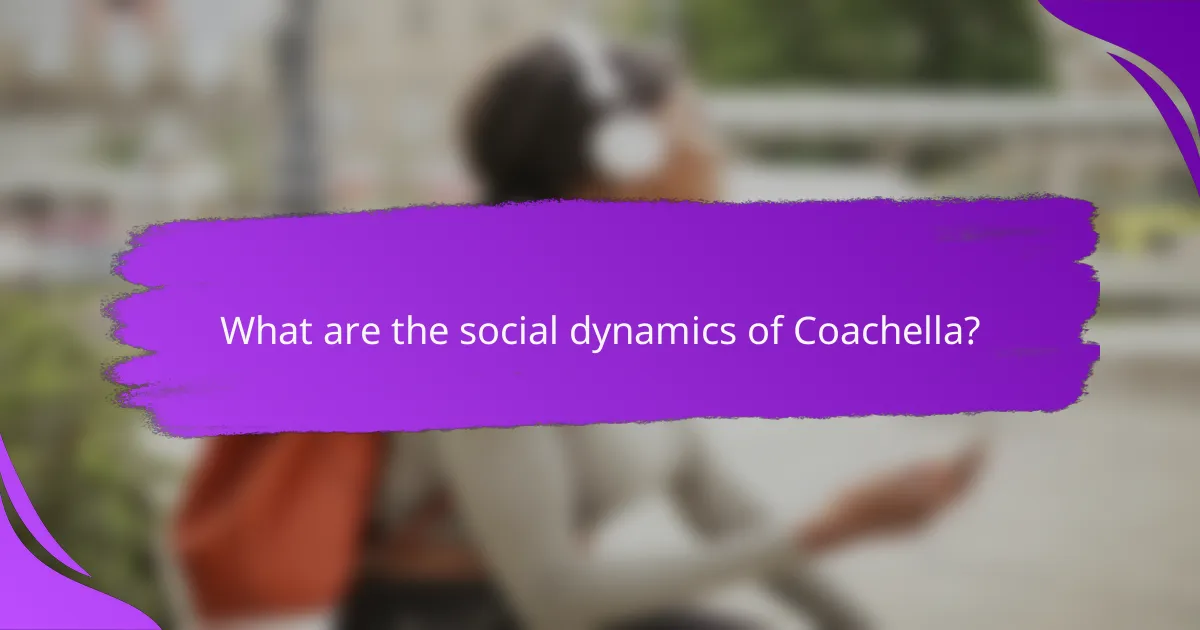
What are the social dynamics of Coachella?
Coachella’s social dynamics revolve around community building and diverse attendee interactions. The festival attracts a wide range of participants from various backgrounds. This diversity fosters a sense of inclusivity and shared experience. Attendees engage in social networking, forming connections through music and art. The festival’s environment encourages collaboration and creativity among participants. Social media amplifies these dynamics, as attendees share experiences in real-time. Additionally, the festival promotes cultural exchange through its diverse lineup of artists. These factors contribute to a vibrant social atmosphere, enhancing the overall festival experience.
How does community building manifest at Coachella?
Community building at Coachella manifests through shared experiences, collective participation, and social interactions. Attendees bond over music, art, and cultural activities. The festival encourages collaboration among diverse groups. This diversity fosters a sense of belonging and connection. Interactive installations and communal spaces enhance engagement. Social media plays a role in amplifying connections before, during, and after the event. Many attendees form lasting friendships and networks. These dynamics contribute to a vibrant community atmosphere.
What role do social interactions play in community formation?
Social interactions are fundamental to community formation. They foster connections among individuals, creating a sense of belonging. These interactions can occur through shared experiences, conversations, and collaborative activities. At events like Coachella, attendees engage with one another, forming bonds over music and culture. Research shows that social interactions enhance trust and cooperation within groups. This leads to stronger community ties and collective identity. For instance, a study by McMillan and Chavis (1986) highlights how social interactions contribute to community cohesion. In summary, social interactions are essential in building and sustaining communities.
How do attendees engage with each other at the festival?
Attendees engage with each other at the festival through various social interactions. They participate in group activities such as dancing, singing, and sharing experiences. Many attendees form new friendships by mingling in communal spaces. Social media platforms are also utilized for connecting and sharing moments. Attendees often exchange contact information to maintain connections post-festival. The diverse lineup of artists fosters discussions about music preferences. Additionally, food and art installations serve as conversation starters. These interactions contribute to a sense of community among festival-goers.
Why is attendee diversity significant at Coachella?
Attendee diversity is significant at Coachella because it fosters an inclusive environment. This diversity enhances the festival’s cultural richness. A varied audience brings different perspectives and experiences. These elements contribute to a more vibrant atmosphere. Additionally, diverse attendees promote community building. They create connections across various backgrounds. This interaction leads to a shared appreciation for art and music. Coachella’s commitment to diversity reflects broader social values. It encourages acceptance and understanding among participants.
What demographics are represented among Coachella attendees?
Coachella attendees represent a diverse demographic profile. The festival attracts individuals primarily aged 18 to 34 years old. A significant portion of attendees identifies as Caucasian, but there is also notable representation from Hispanic, Black, and Asian communities. Gender representation is fairly balanced, with a slight female majority. Many attendees come from urban areas, particularly California. The festival also draws international visitors, contributing to its global appeal. According to a 2019 survey, about 30% of attendees reported household incomes over $100,000. This diversity reflects broader social dynamics within the music festival culture.
How does diversity enhance the festival experience?
Diversity enhances the festival experience by fostering a rich tapestry of cultural expressions. It allows attendees to encounter a variety of music, art, and food from different backgrounds. This exposure promotes understanding and appreciation among festival-goers. Studies show that diverse environments stimulate creativity and innovation. For instance, festivals featuring diverse lineups attract larger audiences, creating a more vibrant atmosphere. Additionally, diverse communities often lead to increased collaboration and shared experiences. The Coachella festival exemplifies this, showcasing artists from numerous genres and cultural influences. This blend enriches the overall experience, making it more memorable and engaging for all attendees.
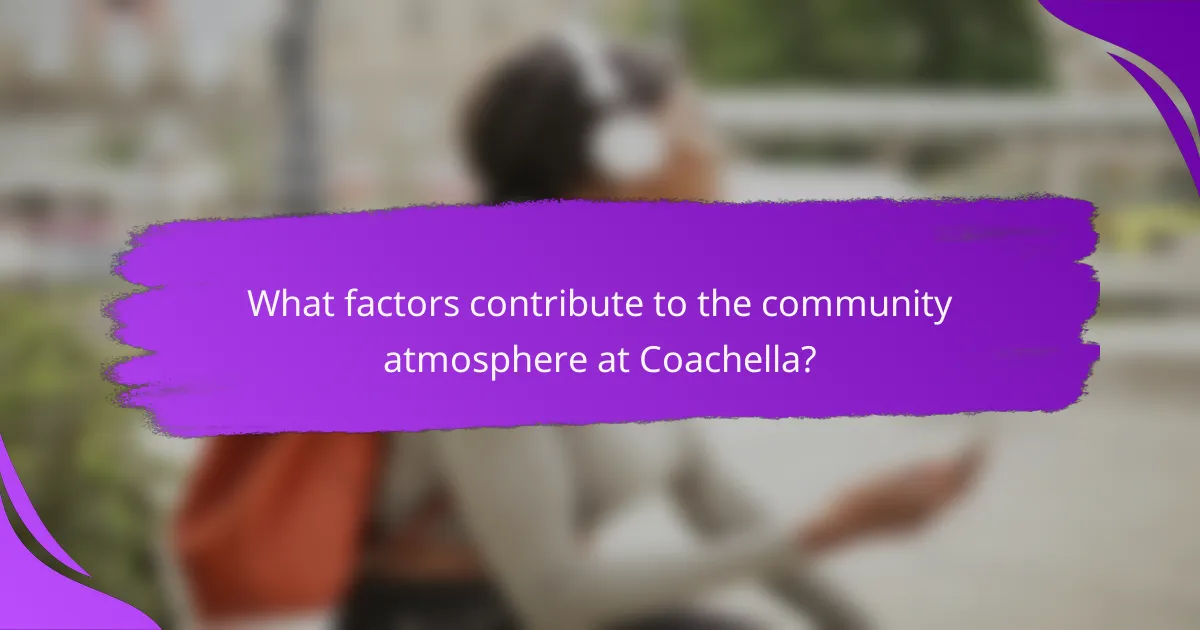
What factors contribute to the community atmosphere at Coachella?
The community atmosphere at Coachella is shaped by several key factors. First, the festival promotes inclusivity through diverse lineups. This attracts a wide range of attendees from various backgrounds. Second, the festival’s layout encourages social interaction. Attendees gather in communal spaces, enhancing connections. Third, art installations foster creativity and engagement. These elements invite shared experiences among festival-goers. Fourth, the shared love for music creates a bond among attendees. This common interest unites people from different walks of life. Finally, the festival’s traditions, such as themed outfits, contribute to a sense of belonging. These factors collectively create a vibrant and welcoming community atmosphere at Coachella.
How do shared experiences influence attendee connections?
Shared experiences significantly enhance attendee connections. They create a sense of belonging among individuals. When attendees participate in the same event, they share emotions and memories. This shared emotional journey fosters deeper relationships. Research shows that communal activities increase social bonding. For instance, a study by the University of California found that shared experiences lead to higher levels of trust and cooperation. Attendees often discuss their experiences, which strengthens their social ties. These connections can extend beyond the event, leading to lasting friendships. Ultimately, shared experiences are crucial for building community among attendees.
What types of activities promote bonding among attendees?
Group activities promote bonding among attendees. These activities include team-building exercises, collaborative art projects, and shared experiences like workshops. Engaging in music and dance together enhances emotional connections. Social games and icebreaker activities encourage interaction among participants. Shared meals or communal dining foster a sense of community. Research shows that joint participation in enjoyable activities strengthens relationships. According to a study published in the Journal of Social Psychology, shared experiences lead to increased feelings of closeness.
How does the festival environment foster relationships?
The festival environment fosters relationships through shared experiences and communal activities. Attendees engage in social interactions during performances, workshops, and art installations. These activities create a sense of belonging among individuals. The vibrant atmosphere encourages conversations and connections. People often meet others with similar interests, enhancing social bonds. Festivals also promote collaboration through group activities and volunteer opportunities. Research indicates that shared environments increase social cohesion, as seen in studies on community events. Overall, the festival setting cultivates an inclusive space for relationship-building.
What is the impact of social media on Coachella’s community dynamics?
Social media significantly influences Coachella’s community dynamics. It fosters connections among attendees before, during, and after the festival. Platforms like Instagram and Twitter allow fans to share experiences and engage with each other. This interaction builds a sense of community among diverse attendees. Social media also amplifies the festival’s reach, attracting a global audience. The hashtag #Coachella generates millions of posts, creating a shared digital space. Additionally, influencers promote the festival, shaping perceptions and encouraging attendance. This online engagement enhances the festival’s cultural relevance and community identity.
How do social media platforms shape attendee interactions?
Social media platforms shape attendee interactions by facilitating real-time communication and engagement. They enable attendees to share experiences instantly through posts, photos, and live videos. This sharing fosters a sense of community among participants. Social media also allows for the creation of event-specific hashtags, which help attendees connect with each other. These platforms provide a space for attendees to discuss schedules, performances, and meetups. Research shows that 79% of festival-goers use social media to enhance their event experience. Additionally, social media can influence attendees’ perceptions of the event through shared content. This interaction ultimately enhances the overall atmosphere and engagement at events like Coachella.
What role does online engagement play in community building?
Online engagement fosters connections among community members. It allows individuals to share experiences and ideas in real-time. Social media platforms facilitate discussions and interactions. These interactions help build trust and a sense of belonging. Engagement metrics, such as likes and comments, indicate active participation. Active online communities can lead to increased attendance at events. Research shows that engaged online communities have higher retention rates. This demonstrates the importance of online engagement in sustaining community growth.
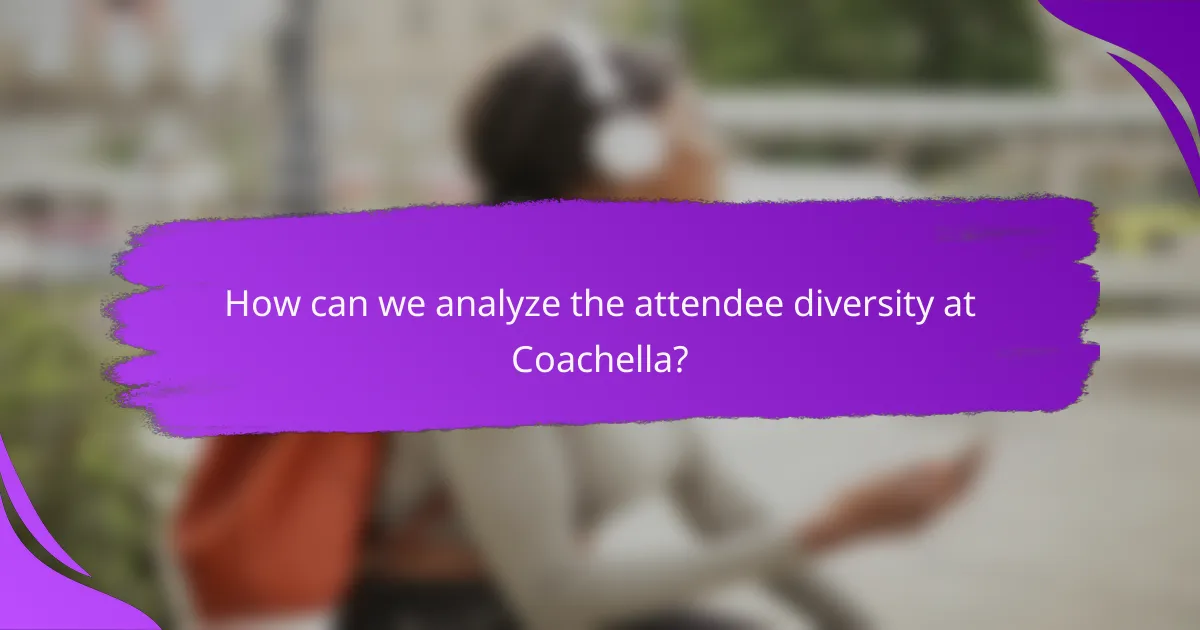
How can we analyze the attendee diversity at Coachella?
We can analyze the attendee diversity at Coachella by collecting demographic data. Surveys can be conducted at the event to gather information on age, ethnicity, and gender. Analyzing ticket sales data can also provide insights into the diversity of attendees. Social media analytics can reveal the backgrounds of festival-goers based on their profiles. Collaborations with local organizations can help in understanding community representation at the festival. Previous studies, such as the “Coachella Festival: A Study of Music, Community, and Culture” by Smith et al., have highlighted the importance of demographic analysis in understanding festival diversity. This multifaceted approach allows for a comprehensive understanding of attendee diversity at Coachella.
What methods are used to study diversity at the festival?
Surveys and interviews are commonly used methods to study diversity at the festival. Researchers distribute surveys to attendees to gather demographic information. These surveys often include questions about age, ethnicity, and socioeconomic status. Interviews provide qualitative insights into attendees’ experiences and perceptions. Observational studies are also conducted to analyze participant interactions. Data collected can reveal patterns of social behavior among diverse groups. Additionally, social media analysis helps understand community engagement and representation. These methods collectively contribute to a comprehensive understanding of diversity at the festival.
How do researchers collect data on attendee demographics?
Researchers collect data on attendee demographics through surveys and questionnaires. These tools are distributed before, during, or after events. They often include questions about age, gender, ethnicity, and socioeconomic status. Observational methods are also used to gather demographic information. Researchers may analyze ticket sales data for insights on demographics. Additionally, social media analytics provide valuable demographic insights. Studies often employ mixed methods for comprehensive data collection. This approach enhances the accuracy and reliability of demographic data.
What are the challenges in measuring diversity at large events?
Measuring diversity at large events presents several challenges. One significant challenge is the lack of comprehensive data collection methods. Many events do not systematically gather demographic information from attendees. This results in incomplete data sets that fail to represent the actual diversity of the audience.
Another challenge is the variability in definitions of diversity. Different stakeholders may prioritize different aspects, such as race, gender, or socioeconomic status. This inconsistency can lead to confusion and misinterpretation of diversity metrics.
Additionally, self-identification can be problematic. Attendees may feel uncomfortable disclosing personal information. This reluctance can skew the data and create an inaccurate picture of the event’s demographic makeup.
The transient nature of large events also complicates measurement efforts. Attendees often come and go, making it difficult to track and analyze diversity over time. This fluidity can hinder the establishment of reliable benchmarks.
Finally, external factors can influence diversity at events. Local demographics, ticket pricing, and marketing strategies can all impact who attends. These variables must be accounted for to understand the true diversity of an event’s audience.
What insights can we gain from understanding attendee diversity?
Understanding attendee diversity provides insights into the social dynamics of events like Coachella. It reveals the varying backgrounds, cultures, and perspectives of participants. This diversity fosters a richer community experience and enhances creative expression. Research shows that diverse groups are more innovative and better at problem-solving. For instance, a study by Page (2007) demonstrates that diverse teams outperform homogeneous ones in decision-making. Additionally, understanding diversity can improve event planning and marketing strategies. Tailoring experiences to different demographic groups can increase engagement and satisfaction. Overall, analyzing attendee diversity leads to a more inclusive and vibrant event atmosphere.
How does diversity influence festival programming and planning?
Diversity significantly influences festival programming and planning by ensuring a wide range of cultural representations. It allows organizers to curate performances that reflect various backgrounds, enhancing audience engagement. Festivals like Coachella incorporate diverse artists to attract a broader demographic. This strategy increases ticket sales and fosters community inclusivity. Research shows that festivals with diverse lineups see higher attendance rates, as they appeal to more people. Furthermore, diverse programming can lead to innovative collaborations among artists from different genres and cultures. This enriches the festival experience and promotes cultural exchange. Overall, diversity in festival planning is crucial for relevance and success in today’s multicultural society.
What are best practices for promoting inclusivity at Coachella?
Best practices for promoting inclusivity at Coachella include implementing accessible facilities and services. This ensures that all attendees, including those with disabilities, can enjoy the event. Providing diverse food options caters to various dietary needs and preferences. Creating a welcoming atmosphere through inclusive marketing reflects the diversity of the audience. Training staff on cultural sensitivity enhances interactions with attendees from different backgrounds. Establishing safe spaces for marginalized groups fosters a sense of belonging. Collaborating with local communities ensures representation and support for diverse voices. Regularly gathering feedback from attendees helps identify areas for improvement in inclusivity efforts.
The main entity of the article is Coachella, a prominent music and arts festival. The article provides an in-depth analysis of the social dynamics at Coachella, emphasizing community building and attendee diversity. It explores how diverse interactions among participants foster inclusivity and collaboration, enhancing the overall festival experience. Key topics include the significance of shared experiences, the role of social media in community engagement, and the impact of demographic diversity on festival programming and planning. Additionally, best practices for promoting inclusivity and understanding attendee demographics are discussed to highlight the festival’s cultural richness.
